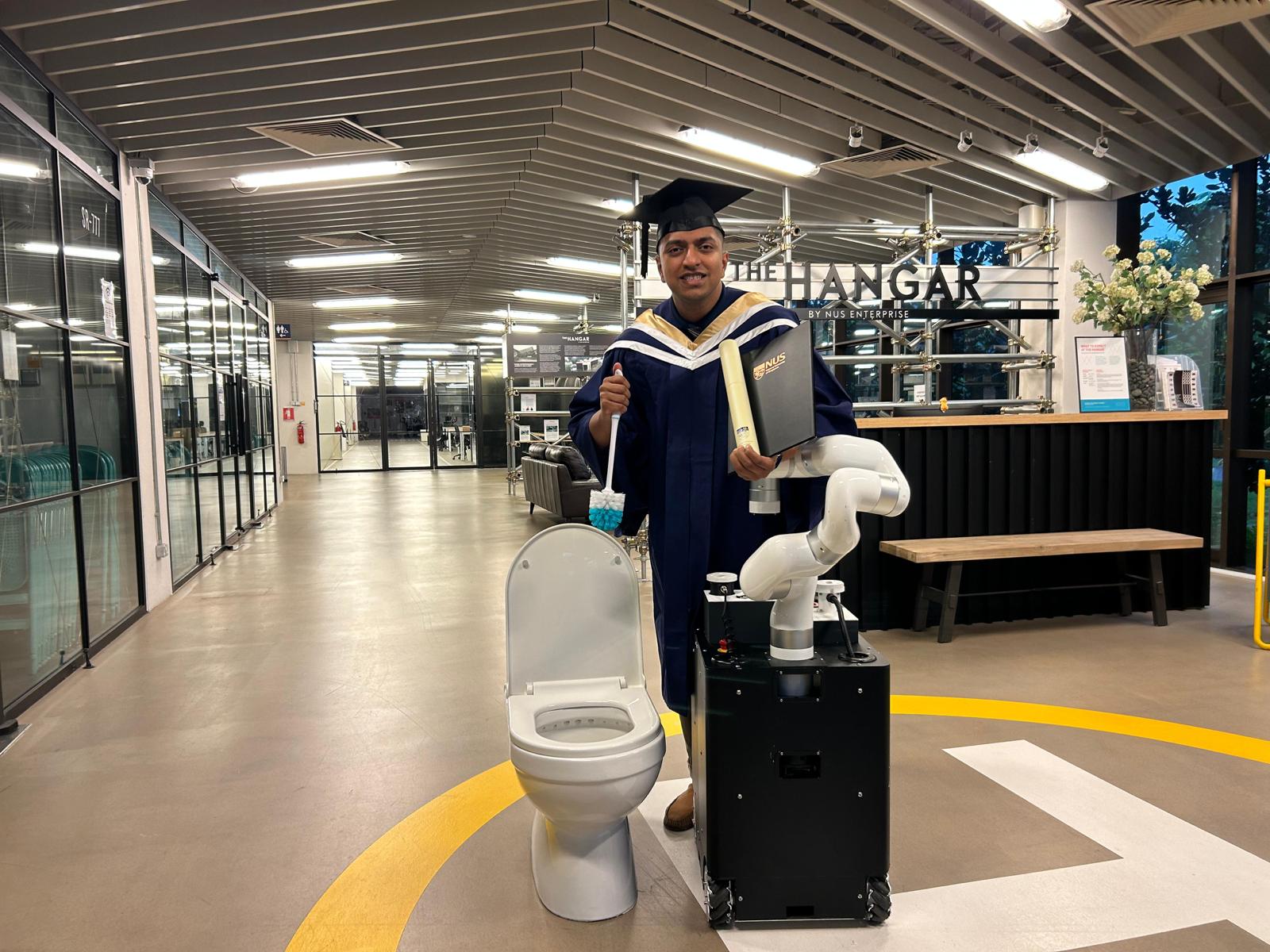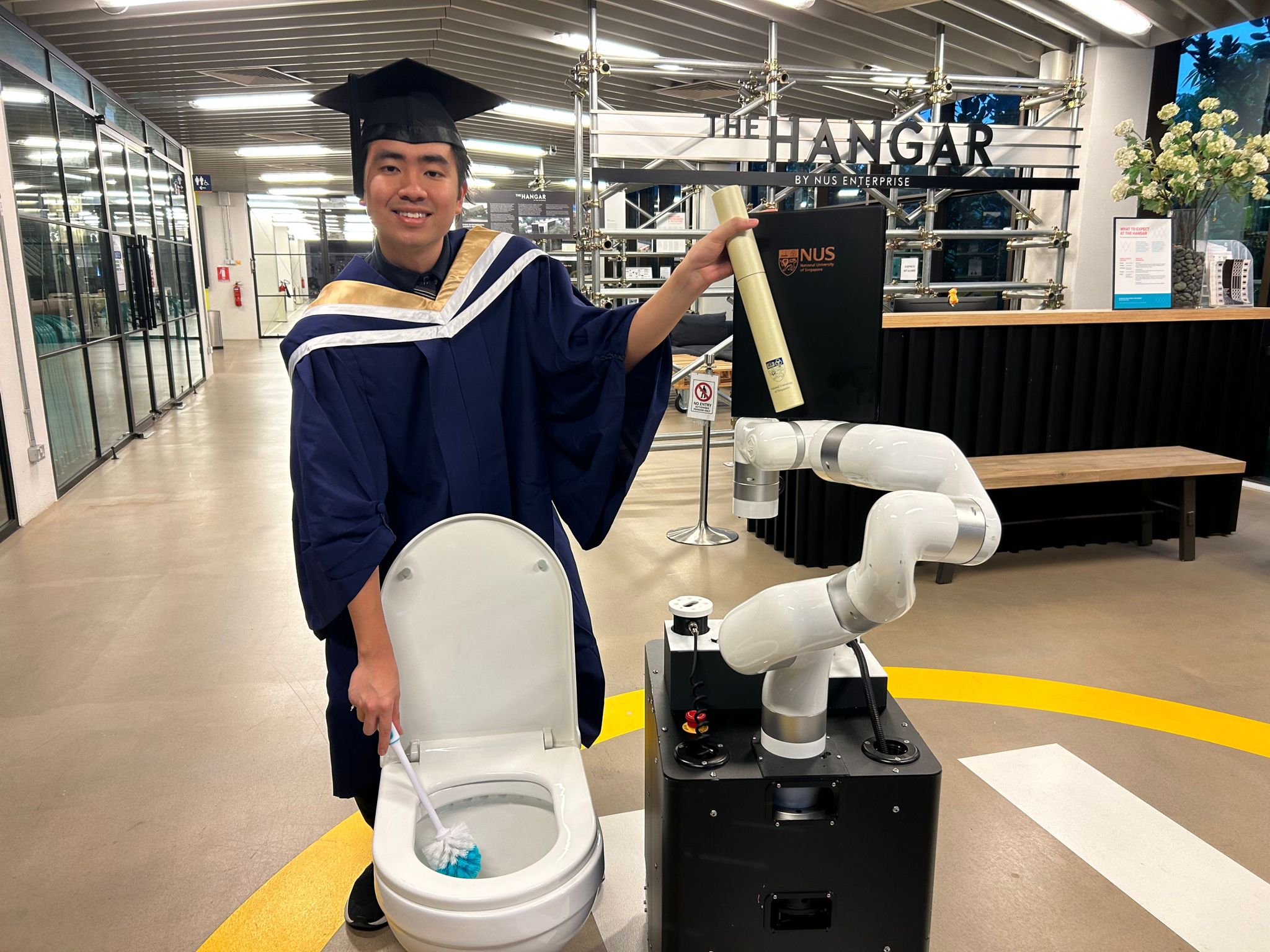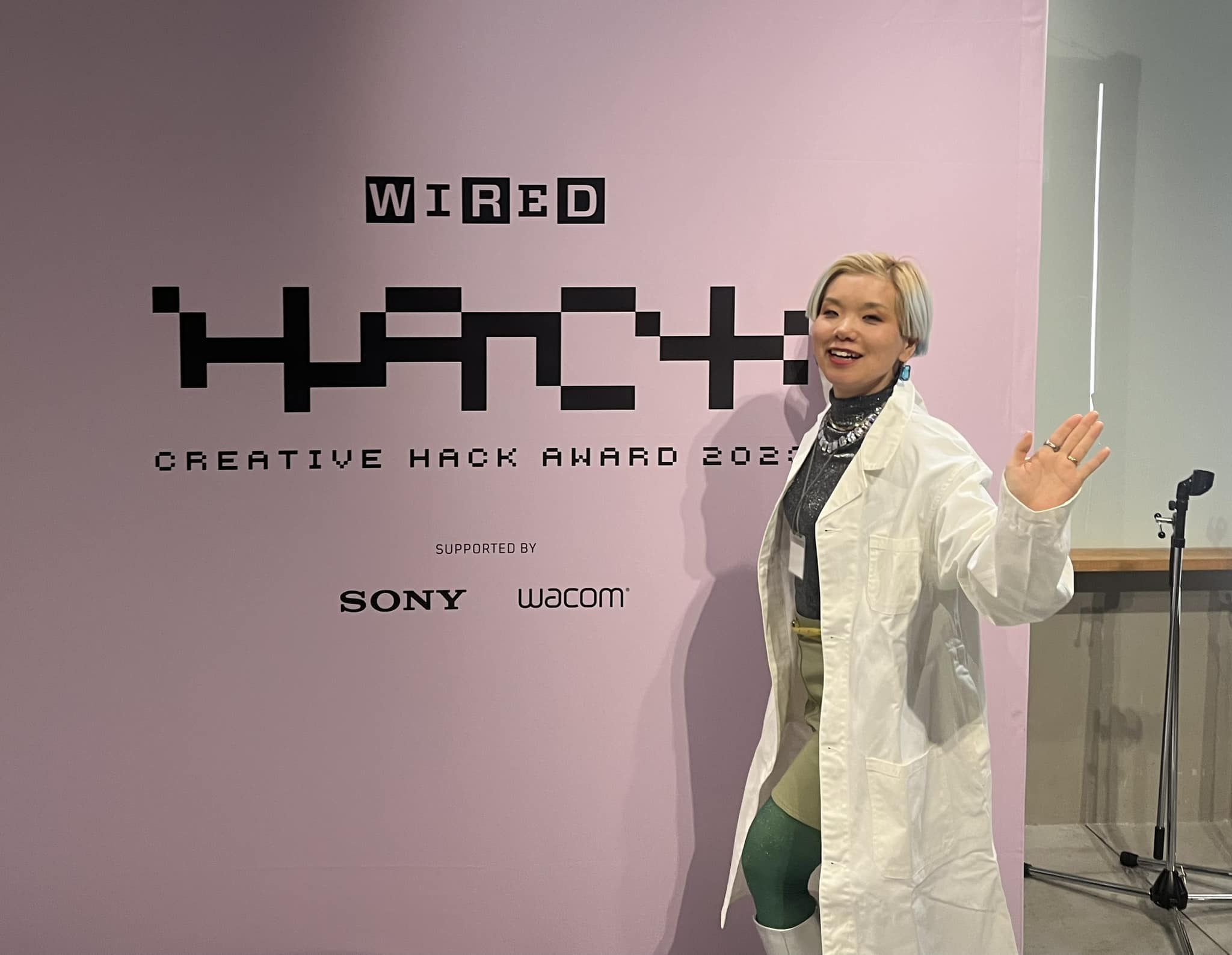HIGHLIGHTS
RESEARCH IMPACT & COLLABORATIONS
CDE start-up Hivebotics toilet cleaning robot to be trialled
Abluo, an autonomous toilet-cleaning robot developed by graduates from CDE, is set to make its debut in Singapore’s public bathrooms in 2024.
Abluo is the product of Hivebotics, a start-up that sprang from the Innovation and Design Programme (iDP), which was co-founded by class of 2023 graduates Rishab Patwari (Computer Engineering) and Nguyen Tuan Dung (Mechanical Engineering).
Equipped with a swivelling arm, brushes, a steam spray and an array of other tools, Abluo aims to halve the time that human cleaners typically spend cleaning toilets so that they can focus on other tasks. Abluo’s advanced sensor system gives the robot a 3D view of its surroundings, enabling it to identify the areas that need work and recognise when they have been cleaned to a sufficient standard.
With an industry shortage of cleaning staff, Hivebotics’ mission aims to empower workers “to attain the best productivity and quality of life by automating dangerous, dirty and demeaning tasks.”
Both Rishab P. and Tuan Dung Nguyen spent time working on the frontlines in Singapore’s public bathrooms, learning from cleaning workers about the they face before applying that to design the complex hardware and software that went into Abluo.
Development of Abluo began in early 2021 and received support from NUS and JTC Corporation. The Hivebotics team also received support from technical advisor Prof Marcelo Ang (Mechanical Engineering), Director of the NUS Advanced Robotics Centre.
A final public testing phase for Abluo is due to begin in Q2 2024, ahead of its commercial launch in July.
Read more about Abluo and the team behind this cleaning innovation at The Straits Times at: https://www.straitstimes.com/tech/autonomous-cleaning-bot-to-start-scrubbing-public-toilets-in-early-2024.
View the project's at: https://cde.nus.edu.sg/edic/projects/innovations-in-intelligent-systems/hivebotics/


Success in space
NuSpace Pte Ltd and Squareroot8 Technologies have successfully demonstrated a light-weight prototype of Post-Quantum Cryptography (PQC) key exchange between the nano-satellite, NuLIoN, and a Singapore Ground Station. The keys were generated by an on-board Quantum Random Number Generator (QRNG) chipset. This first-of-its-kind demonstration provides a cost-effective solution to the risk of future quantum computers breaking satellite communications.
NuSpace Pte Ltd, a spin-off from the CDE and a NUS Graduate Research Innovation Programme (GRIP) alumni, is a Singapore-based satellite builder. Squareroot8 Technologies, from CDE, is a Singapore-based quantum silicon photonics company.
This achievement marks a giant leap in secure communication systems, pushing the boundaries of innovation in the satellite industry. Read more at: https://www.nuspace.sg/successful-space-demonstration-of-qrng-pqc-module-with-squareroot8/
Highlighting immune cells’ killer powers


Highlighting immune cells’ killer powers
A new method for understanding the behaviour of immune cells, using a coloured dye to identify and sort which cells are most effective at combatting infections, could open up possibilities for creating advanced immunotherapy treatments for various diseases.
The researchers behind the discovery, led by Assistant Professor Cheow Lih Feng, say it marks a major step forward in the analysis of a crucial immune system mechanism.
The method - called PAINTKiller - uses a non-toxic, coloured dye to identify and sort the most effective killer immune cells, shedding new light on the functions of the human body’s defences and a process known as cell-mediated cytotoxicity that tackles disease-causing foreign cells.
The research was first published in Nature Biomedical Engineering.
Read more at: https://cde.nus.edu.sg/news-detail/highlighting-immune-cells-killer-powers/

Conservation kit wins award
“Coral Rescue” designed by Ms Tomomi Sayuda, a former visiting fellow at the Division of Industrial Design (DID), from the University of Tokyo, has won the Grand Prix for WIRED Creative Hack Award 2023!
The project centres around a specially designed tank that enables members of the public to grow coral at home for eventual return to the ocean. "This project aims to make marine science more accessible and provide opportunities for public participation in coral conservation," Ms Sayuda said.
Designed during her time at DID, the project had evolved from a collaboration between the DID and the NUS Tropical Marine Science Institute and the DLX Design Lab, Institute of Industrial Science, at the University of Tokyo (UTokyo).
Read more at: https://cde.nus.edu.sg/news-detail/conservation-kit-encourages-public-to-grow-coral-at-home/

Collaborative research in design – the CALIPSO collaboration

By leveraging the patents of microfabricated chips and soSPIM (Single Objective Selective Plane Illumination Microscopy) technology developed by MBI and CNRS, the Design Incubation Centre (DIC) embarked on a journey to conceptualise an ideal machine, prioritising ergonomics and user experience. The objective was to address archaic practices associated with out-of-reach optical and electronic components, which, upon initial field observations, were found to generate visual confusion and ergonomic challenges.
Anticipating further value-add from the experience, Project Director Christophe Gaubert stated that “Design was brought to its rightful place early in the process. It allowed a genuine dialogue between the scientific and the design teams, leading to a shared definition of the issues, developing the brief together, agreeing on the vision and ambition of the project, and co-designing an innovative product, innovative because it was thought of in the right way since the very beginning.”
Read more at: https://cde.nus.edu.sg/collaborative_research_in_design/



